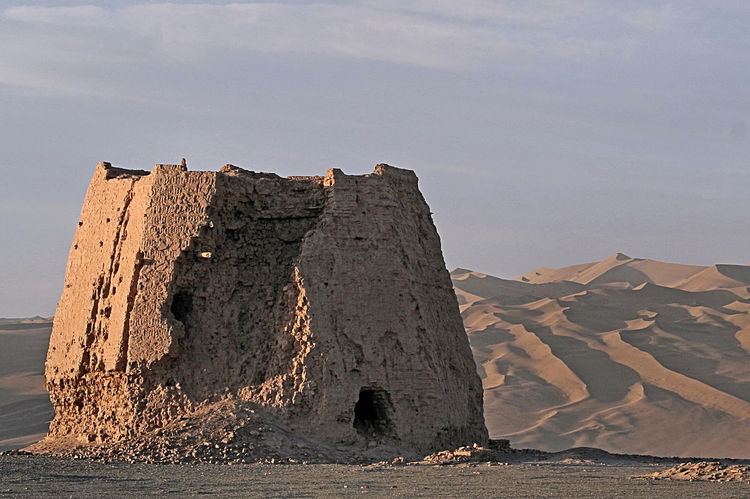 | ||
History
Historic Anxi was a major town, where the northern and southern Silk Roads around the Taklamakan Desert diverged.
"Emperor Wudi (140-87 BCE) had the Great Wall extended northwestward all the way to the Gate of Jade (Yumen Pass), the westernmost garrison town near Dunhuang. He then set up a system of garrisons all along this part of the Great Wall and put its headquarters in a town called Anxi (“Tranquil West”) ."
A more accurate translation might be "[Garrison to] Pacify the West".
In the 1920s Mildred Cable and Francesca French explored the city walls and surrounding area, which they described as "a place of real importance, though this would never be guessed from its shabby appearance." They recorded that its earlier name was Yüan Chüan ("First Spring").
Little modern archaeological work has taken place at the site.
Also important are:
Current site
The ruined town (also referred to as Suoyang or Guazhou) lies east of the small modern town of Tashi (also known as Suoyangxiang), about 30 km south of the modern town of Guazhou.
